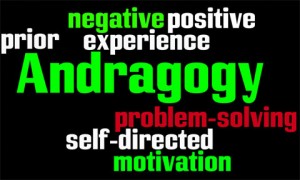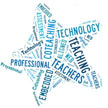Yesterday at the AASL President’s Program speaker 2013 AASA National Superintendent of the Year Mark A. Edwards from Mooresville (NC) Graded School District spoke eloquently on the role that school culture and vision play in his district’s successful technology “conversion.” While he described the investment Mooresville is making by leasing computers for every student, faculty, and staff member in the district, he focused on the idea of “all in!!!” as much or more than the tools themselves.
Although I have not yet read his book, Every Child, Every Day: A Digital Conversion Model for Student Achievement, Dr. Edwards clearly outlined a school culture context in which everyone is invested in and committed to providing students with the most engaging, collaborative, real-world learning experiences that lead to student (and educator) success.
Dr. Edwards talked about six ingredients in the Mooresville initiative. It was compelling to note that only two of them were directly related to technology: 21st-century tools and rich and intensive data used by students, teachers, and parents to guide and monitor learning.
The other four ingredients were: building the culture, building capacity through ongoing professional development, “all in!!!,” and ubiquitous leadership. (It is no surprise that Dr. Edwards is now writing a book about distributive leadership.) What should strike all educators, and maybe school librarians in particular, is that everyone has a leadership role in this model, which supports the culture of collaboration in the school.
Said Dr. Edwards: “Every school librarian in Mooresville represents leadership that is central to successful student learning.”
Thank you for an excellent talk, Dr. Edwards, and for spreading your vision far and wide across the country. You have the eyes and ears of other educational leaders. We look forward to hearing more about the success in Mooresville.


